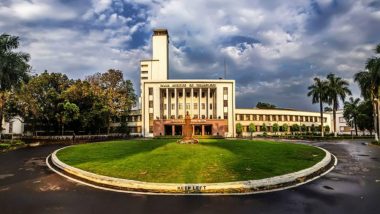Kolkata, Sep 20: Researchers at IIT Kharagpur have developed a new statistical model which can be used to predict variability and trends in rainfall over different climate regions of India. The model, developed by researchers of the Centre for Oceans, Rivers, Atmosphere and Land Sciences (CORAL), takes into consideration both local and remote factors causing weather changes, an IIT-KGP statement said Thursday. Many of these, local and remote, factors that affect weather conditions have been known to the scientific community, the statement said, adding, most weather forecast models typically consider local factors or a single factor that affects rainfall or use of statistical models of correlation to establish the impact of various factors. Because of this, there used to be significant uncertainties in such predictions as each independent factor has a certain impact, which may not match with actual conditions, it said. Indus Valley Civilisation Wiped Out After 900-Year Drought, Says IIT Kharagpur.
"Our study finds that the summer monsoon rainfall variability is governed by the surface temperatures of the Eastern Pacific, Central Pacific, Atlantic and the north Indian Oceans, and equatorial zonal winds," the statement said quoting Prof Jayanarayanan Kuttippurath. However, the winter monsoon rainfall variability is largely controlled by the surface temperature of the North Atlantic and extratropical oceans, Kuttippurath said.
"In our model we have used a technique which removes the impact of individual factors to find the trends in rainfall. The model can be used to find the contribution of individual factors to rainfall and can be applied to estimate the trends and variability of rainfall," Dr Prijitha J Nair, the lead researcher, who conceived and coordinated this study, was quoted as saying in the statement. The model can predict any type of weather conditions, anywhere in the world only by changing the relevant factors affecting the changes, he explained.
The model, which has been developed by using data over a period of 38 years, has predicted significant changes in Indian rainfall in the perspective of global climate change. The data analyses conducted during the study revealed significant positive trends (0.43mm/day/dec) in the north-west for summer rainfall during the period 19792017. 9 Teams Working at IIT-KGP in Smart India Hackathon Programme.
"There are scientific evidences of major climate shifts over centuries. These do not happen overnight but through gradual changes in weather conditions over time," Professor Arun Chakraborty, who supervised the research, was quoted as saying in the statement.
"The data shows there has been an incremental shift of Indian monsoon from east to west. However, this would require further studies," Chakraborty said.
The novelty of the model has been reported through a research paper 'The local and global climate forcings induced inhomogeneity of Indian rainfall' in the much-coveted Scientific Reports by the Nature, the IIT statement said.













 Quickly
Quickly


